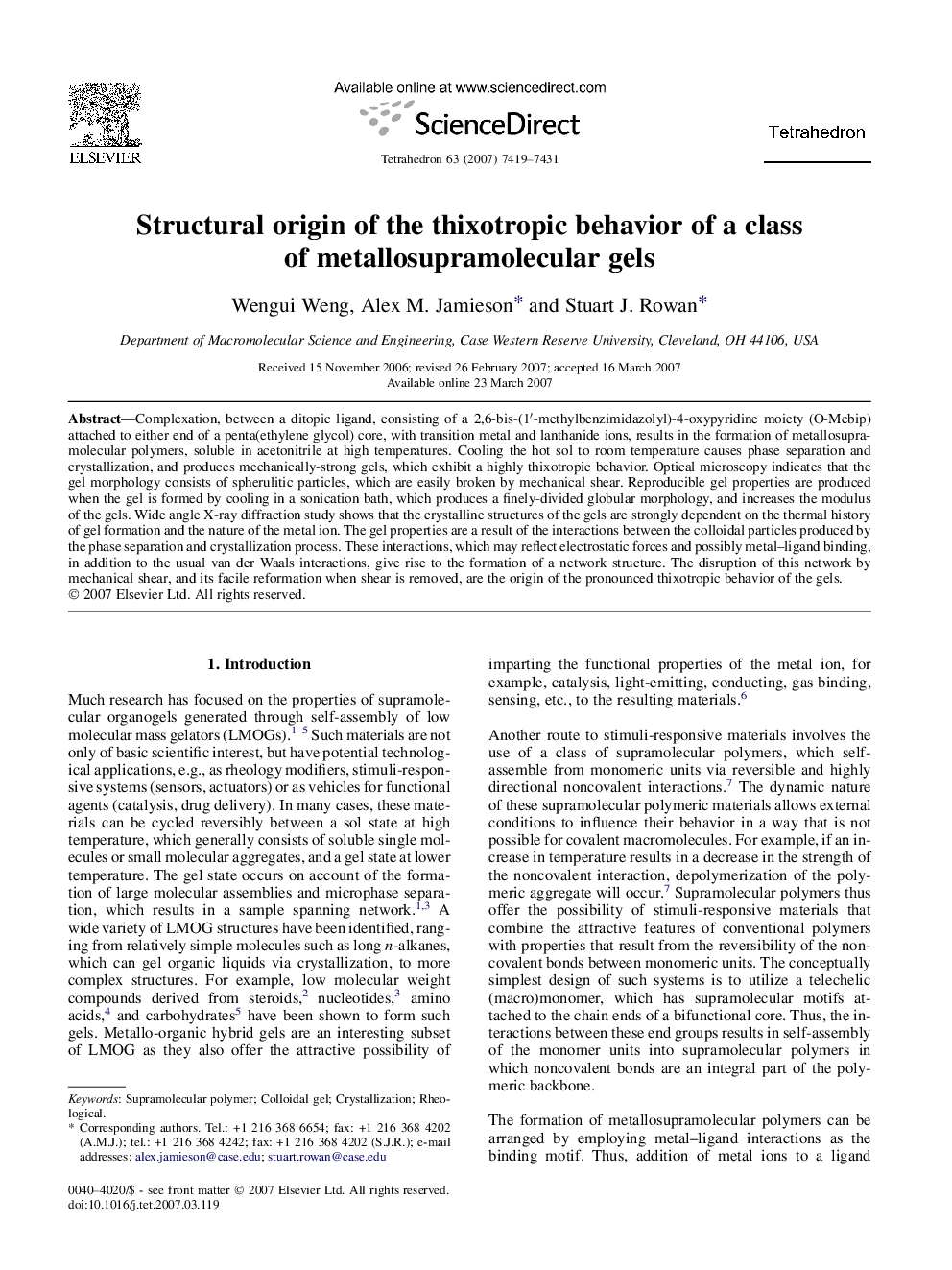| Article ID | Journal | Published Year | Pages | File Type |
|---|---|---|---|---|
| 5225143 | Tetrahedron | 2007 | 13 Pages |
Complexation, between a ditopic ligand, consisting of a 2,6-bis-(1â²-methylbenzimidazolyl)-4-oxypyridine moiety (O-Mebip) attached to either end of a penta(ethylene glycol) core, with transition metal and lanthanide ions, results in the formation of metallosupramolecular polymers, soluble in acetonitrile at high temperatures. Cooling the hot sol to room temperature causes phase separation and crystallization, and produces mechanically-strong gels, which exhibit a highly thixotropic behavior. Optical microscopy indicates that the gel morphology consists of spherulitic particles, which are easily broken by mechanical shear. Reproducible gel properties are produced when the gel is formed by cooling in a sonication bath, which produces a finely-divided globular morphology, and increases the modulus of the gels. Wide angle X-ray diffraction study shows that the crystalline structures of the gels are strongly dependent on the thermal history of gel formation and the nature of the metal ion. The gel properties are a result of the interactions between the colloidal particles produced by the phase separation and crystallization process. These interactions, which may reflect electrostatic forces and possibly metal-ligand binding, in addition to the usual van der Waals interactions, give rise to the formation of a network structure. The disruption of this network by mechanical shear, and its facile reformation when shear is removed, are the origin of the pronounced thixotropic behavior of the gels.
Graphical abstractDownload full-size image
